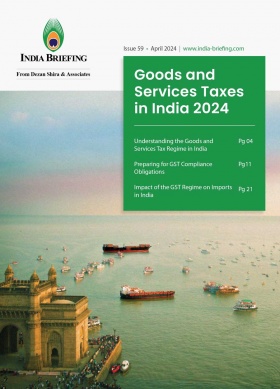India Signs 10-Year Pact with Iran to Operate its Chabahar Port
After long periods of negotiations, India and Iran have finally signed a 10-year long-term bilateral contract for the operation of Chabahar Port. India’s union ministry of ports, shipping, and waterways has said that the agreement is a vital part of the country’s trade plans with Central Asia and parts of Europe.
Under the agreement signed between India Port Global Limited (IPGL) and the Ports and Maritime Organization (PMO) of Iran, India will develop and operate the strategic port, namely Shahid Beheshti terminal, for 10 years. This is India’s first attempt at managing the seaport of a different country.
In order to avoid using the ports of Karachi and Gwadar in Pakistan, India has been building a port in Chabahar on the southeast coast of Iran along the Gulf of Oman as a means of transporting products to Iran, Afghanistan, and other central Asian countries.
India began developing the Shahid Beheshti Port in Chabahar by setting up and running a general cargo and container terminal. According to India’s Ministry of Port, Shipping, and Waterways, from FY 2016–17 to FY 2023–24, INR 4 billion (US$47.7 million) has been allocated for developing the port, of which INR 2.015 billion (US$24.06 million) has been spent on the port.
India celebrates the landmark deal
Following the agreement’s signing on May 13, 2024, India’s Union Minister of Port, Shipping, and Waterways, Sarbananda Sonowal, stated that Chabahar Port is more important than just a bridge linking India with Iran; it’s a critical economic route that links India with Afghanistan and the Central Asian countries. Sonawal further stated that this connection has strengthened supply chain resilience throughout the area and opened up new trade opportunities.
India’s west coast is easily accessible from the Chabahar Port, which is situated on Iran’s southwest coast. In the International North-South Transport Corridor (INSTC), it also serves as a vital link. The long-term agreement will solidify India’s expanding role in advancing international trade and commerce and significantly stimulate economic activity.
- Through the INSTC, a road and rail project, the port will give Indian commodities a gateway to landlocked Afghanistan and Central Asia.
- India sent 20,000 tonnes of wheat aid to Afghanistan in 2023 via the Chabahar port. In 2021, Iran received ecologically friendly insecticides from India via the Chabahar port.
- India aims to create direct connectivity to Afghanistan and Central Asia by utilizing Chabahar Port. The distance between Chabahar and Mumbai is 786 nautical miles, with Kandla port in Gujarat being the closest port at 550 nautical miles.
- Both India and Iran envision the site as a major INSTC project hub. A multi-mode transport project spanning 7,200 km, the INSTC is designed to move freight between India, Iran, Afghanistan, Armenia, Azerbaijan, Russia, Central Asia, and Europe.
A loan window of the equivalent of US$250 million has been offered for mutually identified projects aiming at strengthening Chabahar-related infrastructure, while the Indian Embassy in Iran has also declared that the IPGL will spend US$120 million in the port.
Paving way for long-term operational collaboration
While a formal 10-year agreement had been prepared in 2016, sanctions against Iran prevented improvements on that front, and India had been working on the harbor through short-term deals, which were intermittently renewed.
The unstable nature of the project due to geopolitical events have kept financial specialists and shippers hesitant to contribute to the port development project, citing the need for government long-term assistance. India is expecting to reap the benefits of this agreement in its supply chain only in the long haul.
India-Iran Chabahar Port Agreement Timeline
- January 2003: India begins dialogues with Iran on developing a seaport at Chabahar city, located on the Gulf of Oman coast in Iran’s southeastern corner.
- August 2012: Ahead of the NAM summit, India, Iran, and Afghanistan hold a strategic trilateral meet in Tehran to discuss key issues, including trade and transit prospects through Chabahar port.
- January 2013: India pledges investments of US$100 million for India’s first deepwater seaport at Chabahar.
- May 2015: India-Iran ink deal on bilateral engagement; India to spend US$500 million to refurbish Shahid Beheshti terminal and reconstruct a 600-meter-long container handling facility.
- May 2016: India and Iran sign a contract for equipping and operating Chabahar Port.
- October 2017: First shipment from India carrying wheat goes through port to Afghanistan.
- December 2017: Iranian President Hassan Rouhani inaugurates Shahid Beheshti terminal.
- May 2018: India and Iran agree to short-term contract after previous deal faces delay in activation.
- December 2018: India takes charge of operation at the port, including terminal area, cargo handling, and office building.
- February 2019: The first Afghan cargo transits via Chabahar Port.
India’s sustained engagement in Chabahar underscores its role as an anchor for Indian trade in the region while enhancing its role in the global supply chain. India will use the port for humanitarian aid shipments, reaffirming its commitment to support regional development beyond commercial interests.
At present, India is undergoing its 18th general elections. While the Model Code of Conduct bars the government from making announcements of any new engagements, it has been reported that the Ministry of External Affairs and the Ministry of Ports, Shipping, and Waterways sought special permission from India’s Election Commission to sign the Chabahar port deal in Tehran.
India’s trade engagements in Chabahar
The agreement specifies that India will procure equipment and machinery at the port. So far, India has acquired and supplied six mobile harbor cranes and other equipment valued at US$25 million. The sea port will play a crucial role in the eastern route of the INSTC.
India can benefit from Chabahar Port’s advantageous location by expanding its trade flows in addition to having an optional transit route. Though the two countries have agreed to a 10-year extension, it can be extended further through mutual assent. Iran reportedly requested minimum guaranteed traffic (MGT), which is a common clause in port agreements based on concessions.
On to new trade opportunities
Experts in trade and taxation believe that the Chabahar Port offers the Indian oil and gas industry strategic advantages by diversifying import routes, opening up new markets in Central Asia, creating opportunities for infrastructure development, enhancing energy security through a variety of sources, and gaining geopolitical clout in the area. India can reduce the risks associated with using traditional import routes, increase its energy footprint, improve infrastructural capacities, guarantee a steady supply of energy, and make its presence known in the Central Asian regions.
(US$1 = INR 83.72)
This article was originally published on May 14, 2024. It was last updated July 29, 2024.
About Us
India Briefing is one of five regional publications under the Asia Briefing brand. It is supported by Dezan Shira & Associates, a pan-Asia, multi-disciplinary professional services firm that assists foreign investors throughout Asia, including through offices in Delhi, Mumbai, and Bengaluru in India. Dezan Shira & Associates also maintains offices or has alliance partners assisting foreign investors in China, Hong Kong SAR, Vietnam, Indonesia, Singapore, Malaysia, Mongolia, Dubai (UAE), Japan, South Korea, Nepal, The Philippines, Sri Lanka, Thailand, Italy, Germany, Bangladesh, Australia, United States, and United Kingdom and Ireland.
For a complimentary subscription to India Briefing’s content products, please click here. For support with establishing a business in India or for assistance in analyzing and entering markets, please contact the firm at india@dezshira.com or visit our website at www.dezshira.com.
- Previous Article India’s Trade Performance in FY 2023-24 and Strategy to Explore New Export Markets
- Next Article Industry Bodies, Associations Seek Extension for Digital Competition Bill Feedback








